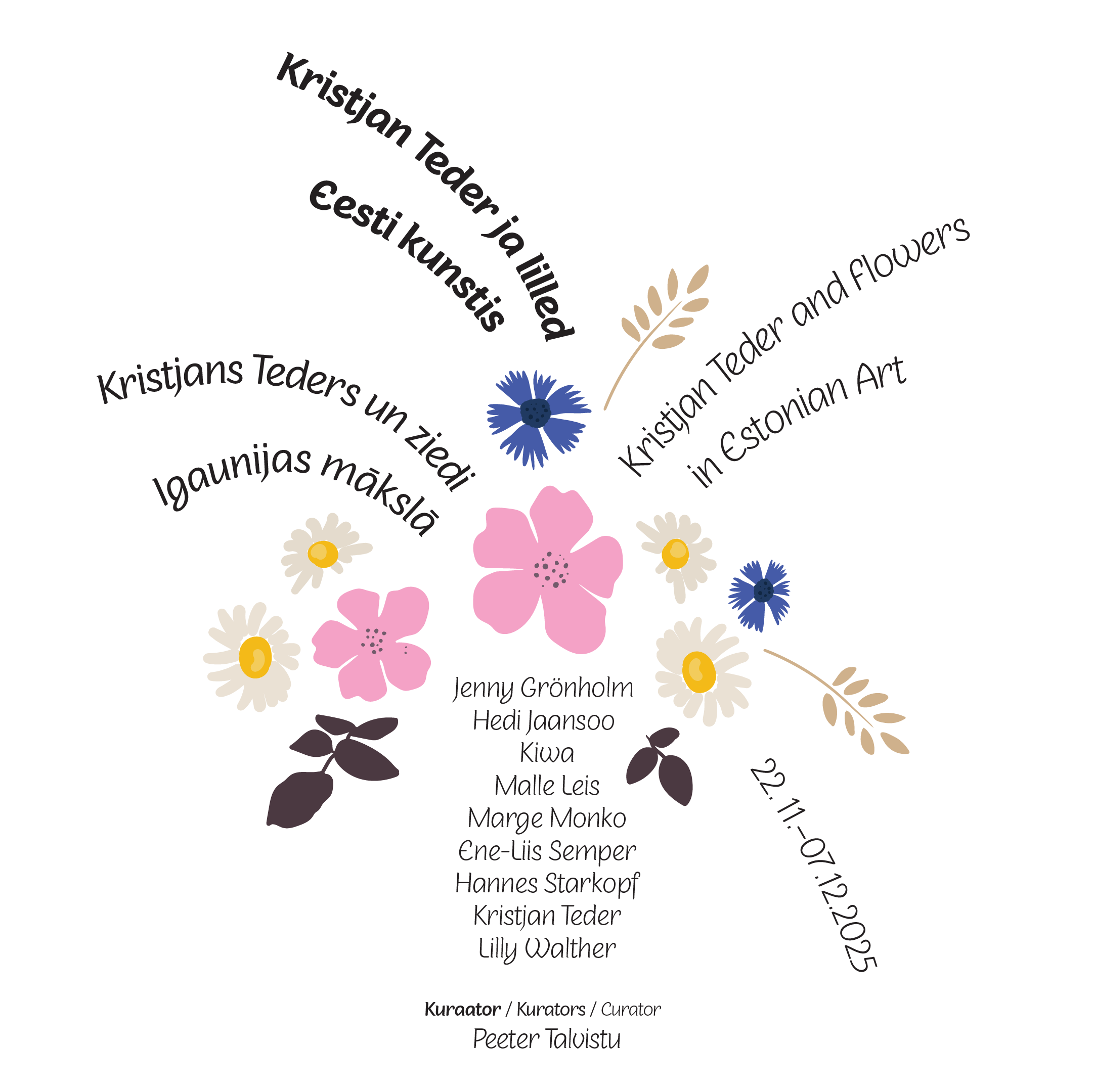Breadcrumb
Exhibition “Kristjan Teder and Flowers in Estonian Art”
On Wednesday, 22 October at 4:00 p.m., the exhibition “Kristjan Teder and Flowers in Estonian Art” will open at the Valga Museum. The exhibition is being held in collaboration with the Tartu Artists’ Union and is being curated by Peeter Talvistu. A SPECIAL BUS will be going from Tartu to the opening!
In October 1966, an exhibition of Kristjan Teder’s works took place at the Valga Museum. It was probably one of the first solo exhibitions at the museum, which is celebrating its 70th anniversary this year. Kristjan Teder (1901–1960) is primarily associated with lush floral displays by art lovers, so the exhibition is a more than appropriate gift to celebrate the jubilee. In this year’s exhibition, Teder’s works are accompanied by those of earlier and later authors from Estonian art history, offering an overview of the depiction and use of flowers in Estonian art from the beginning of the 20th century to the present day.
The earliest flowers in the exhibition come from the works of the Baltic German artist Lilly Walther. Although at that time flowers were considered a theme suitable for women, Walther’s life story is full of disregard for conventions and stubbornness. Kristjan Teder’s love of flowers began during the years he spent in Paris after his studies. The artist, who later also became involved in gardening and beekeeping, continued to depict rich bouquets even under Stalinism, when a completely different kind of art was demanded under the banner of socialist realism and sanctions resulted from ignoring these demands. Flowers were also a lifelong motif in the works of Malle Leis, who in the late 1960s introduced them into her paintings in the style of pop art and later offered both herself and her audience a refuge from the surrounding Soviet reality with her proliferating flora.
The second wave of pop art arrived in Estonia after the restoration of independence and is represented by Hannes Starkopf’s playful sculpture “... Sunbathers on the Beach of Pärnu”, where the painted flowers seem to balance the heaviness of the dolomite. “Oasis”, a video work by Kiwa and Ene-Liis Semper, also dates from the late 1990s. In it the artists become part of nature during a silent planting ritual. In the paintings and photographs of Jenny Grönholm and Hedi Jaansoo, we discover the place for flowers in contemporary art. The exhibition is concluded by Marge Monko’s poster “I Don’t Eat Flowers”, in which the absence of flowers becomes a political statement.
Although the reasons for depicting or not depicting flowers, as well as their symbolic meaning, have changed over time, the ability of flowers to speak to viewers has been universal and timeless. The exhibition “Kristjan Teder and Flowers in Estonian Art” offers a brief but multifaceted overview of these changes.
In addition to Kristjan Teder’s works, works by the following artists are included in the exhibition: Jenny Grönholm, Hedi Jaansoo, Kiwa, Malle Leis, Marge Monko, Ene-Liis Semper, Hannes Starkopf and Lilly Walther. The works come from the collections of the Tartu Art Museum, the Art Museum of Estonia and the authors. The graphic designer of the exhibition is Katrin Nõu.
Since the number of public transport connections between Tartu and Valga is limited, a special bus will be going to the opening. The bus will depart from Tartu in front of the Tartu Art House on 22 October at 2:30 p.m. and will depart Valga for Tartu at 6:00 p.m. The round trip costs five euros (pay in cash on boarding). To reserve a place, PRE-REGISTRATION is required at sekretar@kunstimaja.ee by 21 October.
“Kristjan Teder and Flowers in Estonian Art” is open until 7 December.
Additional information:
Peeter Talvistu
Curator
talvistu@gmail.com
5650 7782
Valga Museum
Vabaduse 8, Valga
www.valgamuuseum.ee
Wed–Sat 11–18, Sun 10–15
The exhibition is being supported by the Cultural Endowment of Estonia, the city of Tartu, the city of Valga, and the Valga Museum.
